What Works BEST When You Need A Buttermilk Substitute?
I highly recommend “Flourish”, the blog found on the King Arthur Flour website. I was just there and found an answer to something I’ve wondered about often. What works BEST when I need a buttermilk substitute? Several of my favorite recipes call for buttermilk, but I rarely have it on hand. So this is a timely bit of reading for me and anyone else that deals with the same dilemma.
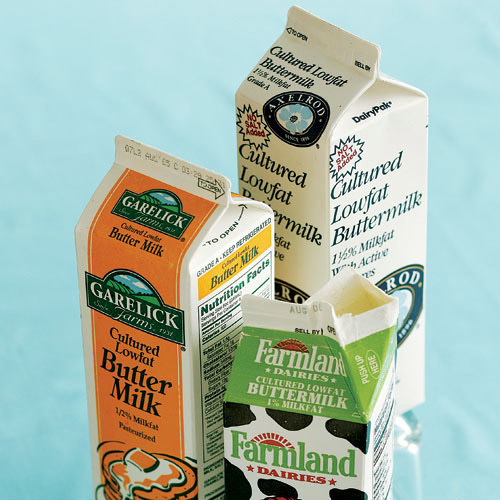
First, what is buttermilk? It’s the thin, watery liquid left over after cream is churned into butter. Today you won’t find it available in grocery stores. In the 1920s, it was supplanted by our present-day cultured buttermilk. Present-day buttermilk is low-fat or skim milk that’s been inoculated with milk-friendly bacteria to thicken it and make it sour.
Buttermilk was a readily available ingredient (and one not to be wasted) back when butter-making was a common household task. Prized for its leavening ability when paired with baking soda, it was the basis of many a light and fluffy pancake, a cloud-like biscuit, and a beautifully risen cake.
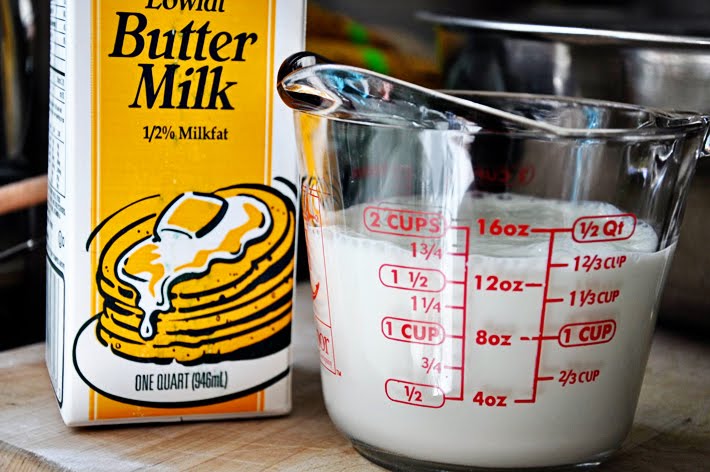
It’s because of this leavening ability that buttermilk as an ingredient is here to stay. So knowing the best ways to substitute for it is smart baking. And the experts in the kitchen at King Arthur flour have done their homework and have good news. They say there is indeed an easy replacement for buttermilk — something you already have in your kitchen.
Here are the most common suggestions, the first one most of us already know:
1 tablespoon vinegar or lemon juice mixed into 1 cup of milk. Let the milk stand for 10 to 15 minutes, until it thickens very slightly and curdles.
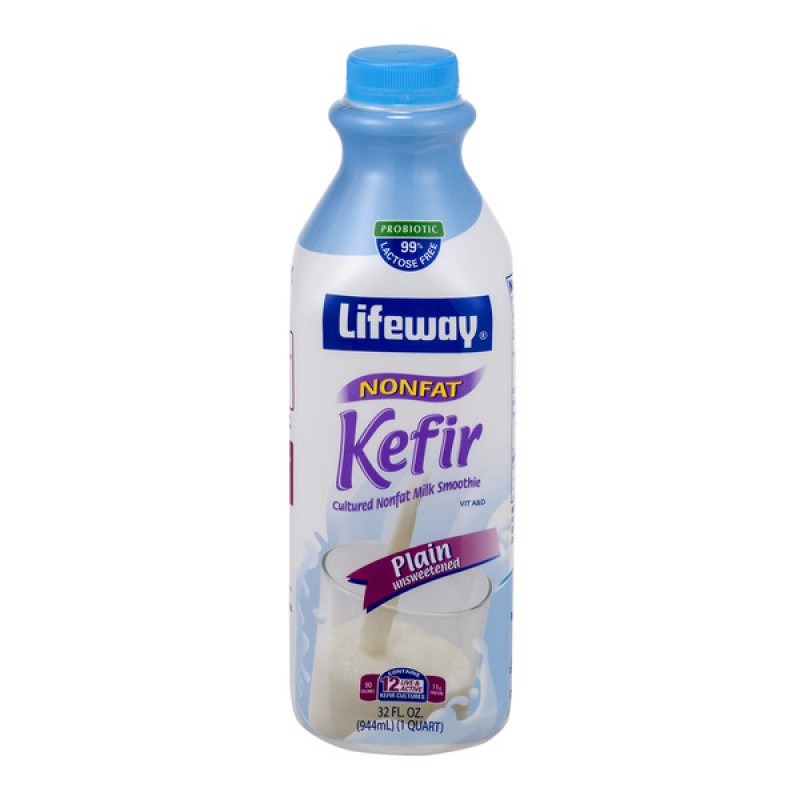
Plain unsweetened kefir.
1 3/4 teaspoons cream of tartar mixed with 1 cup of milk. Shake until the cream of tartar dissolves.
Sour cream thinned with milk or water to the consistency of heavy cream.
Greek yogurt thinned with milk or water to the consistency of heavy cream.
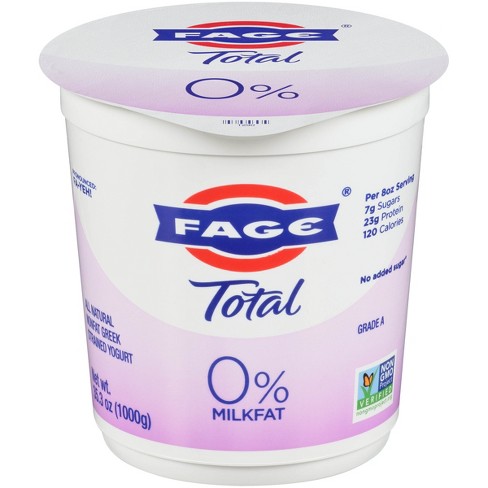
But the King Arthur pros wanted to know which would actually be the BEST substitute. And they found after testing the above on baking powder biscuits and pancakes that the very best choice was the Greek yogurt thinned with milk.
There’s one more option that they mention but didn’t test for: Powdered buttermilk. I actually have a container of this in my baking cupboard. I like having it on hand and have resorted to using it a few times. They reported that it does work as well as an option because it reacts well with leaveners and helps provide a good rise. The one drawback to the powdered stuff, however, is that it lacks the rich flavor of real buttermilk.
I’ll close this buttermilk substitution tutorial with a recipe off the King Arthur Flour site—a favorite of their test kitchen chefs. Of course it calls for buttermilk. But now we know what to do if there’s none in the fridge, right?
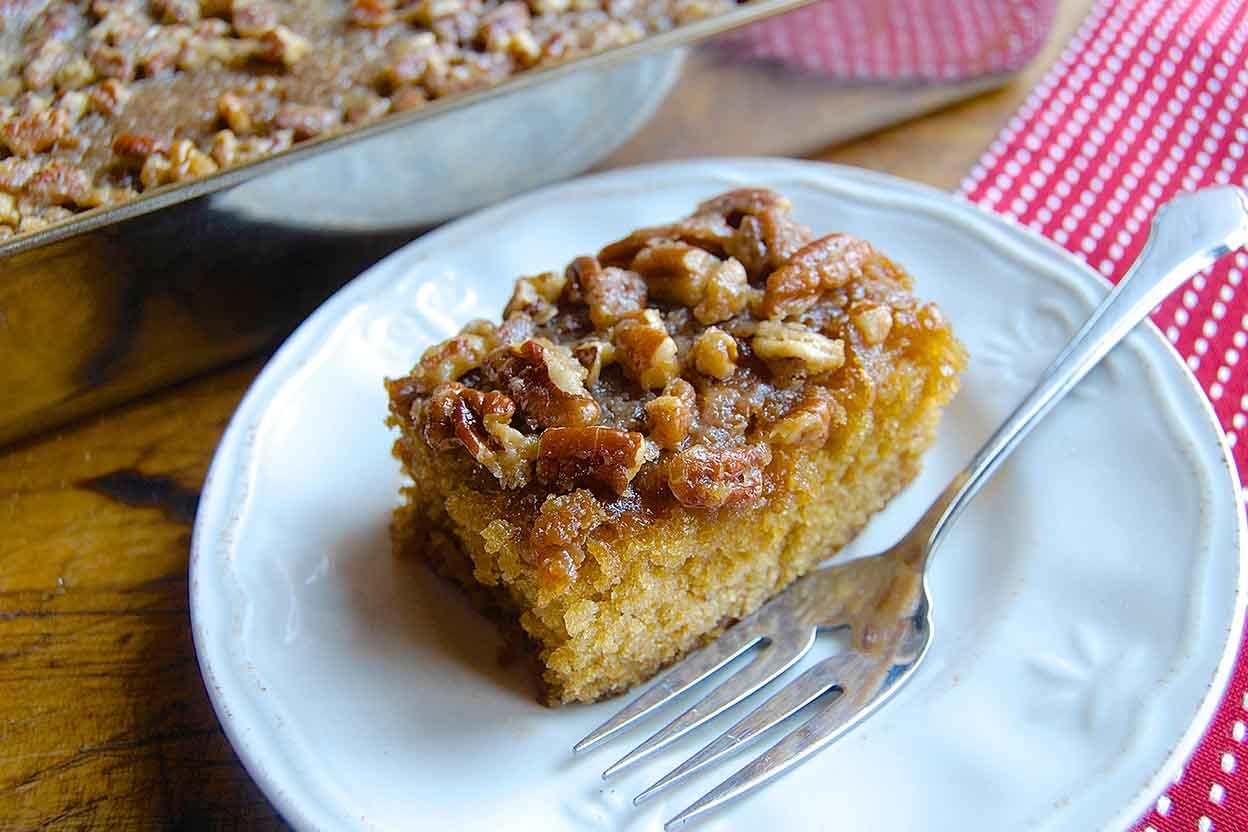
FARMHOUSE BUTTERMILK CAKE
CAKE
1/2 cup butter
2 cups light brown sugar
2 large eggs
2 cups buttermilk
2 teaspoons vanilla extract
2 teaspoons baking soda
1 teaspoon salt
3 cups all-purpose flour
TOPPING
6 tablespoons melted butter
1 cup light brown sugar
1/4 cup milk
1/8 teaspoon salt
2/3 to 1 cup diced pecans
Preheat the oven to 350°F. Lightly grease a 9" x 13" cake pan.
Beat the butter and brown sugar together till smooth.
Add the eggs, beating till smooth.
Stir in the buttermilk and vanilla extract.
Add the baking soda, salt, and flour to the wet ingredients, beating till thoroughly combined.
Pour the batter into the prepared pan.
Bake the cake for 35 minutes. Towards the end of the baking time, prepare the topping.
Stir the butter and the sugar together. Add the milk, pecans, and salt. The glaze will be thick but pourable.
Top the baked cake with the topping, and return to the oven for another 10 minutes.
Remove the cake from the oven. The topping will look very runny. You can eat the cake hot, with the glaze still gooey; or let the cake sit at room temperature for a few hours, by which time the glaze will have set.
- www.finecooking.com
- www.citydaily.in
- www.prestofreshgrocery.com
- www.target.com
- www.kingarthurflour.com
 Alice Osborne
Alice Osborne
Weekly Newsletter Contributor since 2006
Email the author! alice@dvo.com
